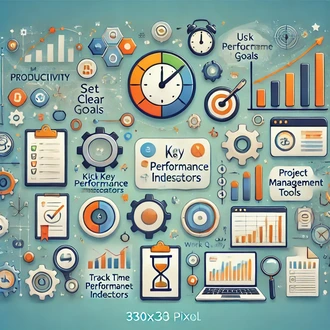ByOnlinecourses55

How to measure productivity at work - productivity work
Measuring productivity in the workplace is essential to assessing employee performance and efficiency. Here are some key strategies and metrics for measuring productivity in the workplace:
Defining specific and achievable goals is critical to measuring productivity. Goals should be clear and align with overall company objectives. Setting clear goals allows employees to know exactly what is expected of them, which can increase their motivation and focus. It is helpful to set short- and long-term goals and regularly review progress toward these goals.
KPIs are metrics that help evaluate progress toward established goals. Examples of KPIs include sales volume, conversion rate, customer satisfaction and operational efficiency. Choosing the right KPIs depends on the type of business and the specific objectives you want to achieve. KPIs should be measurable, relevant and aligned with the company's strategic objectives.
Tracking the time employees spend on different tasks can provide valuable information about their productivity. Using time management tools can facilitate this process. Measuring time spent on tasks allows you to identify areas where employees may be wasting time or where processes can be optimized. This also helps ensure that employees are working efficiently and that time is being used effectively.
The quality of work performed is as important as the quantity. Reviewing accuracy, attention to detail and customer satisfaction can provide a complete picture of an employee's productivity. Quality of work can be measured through periodic reviews, customer feedback and analysis of errors or rework. Fostering a culture of quality can lead to higher customer satisfaction and better long-term business results.
Project management tools can help coordinate work and track progress. These tools allow teams to collaborate effectively and stay on top of their tasks and deadlines. Tools like Trello, Asana and Microsoft Project can provide a clear view of who is working on what, help identify bottlenecks and ensure projects stay on track.
Regular performance appraisals allow employees and managers to discuss progress, identify areas for improvement and set new goals. These evaluations should be honest, constructive and focused on professional development. Providing regular and timely feedback can help employees continually improve their performance and feel valued for their contribution to the team.
Employee satisfaction and well-being can significantly influence employee productivity. Conducting satisfaction surveys and promoting a healthy work environment can help keep employees motivated and engaged. Factors such as work-life balance, recognition and professional development opportunities can positively impact productivity.